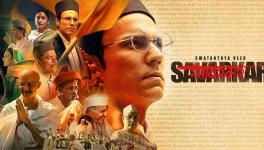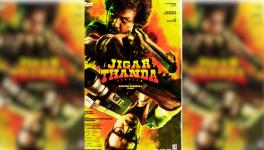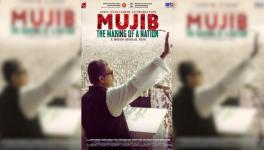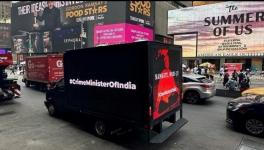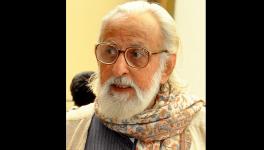Govt Censors as it is Afraid, Has Something to Hide: Filmmaker Pushpendra Singh
Over the past two decades, films made by independent directors have made waves at national and international festivals. But many fade into oblivion in India, where the industry does not provide them with the financial muscle needed to promote their movies. Pushpendra Singh is one such avant-garde filmmaker and actor who trained at the Film and Television Institute of India (FTII), Pune. In 2020, his Laila Aur Satt Geet—The Shepherdess and Seven Songs—located in Kashmir, was screened at the prestigious Berlin International Film Festival. He discusses his films, contemporary politics, and influences with independent journalist Arvind Das. Edited excerpts:
Arvind Das: Your recent film, Laila Aur Satt Geet, is an adaptation of the well-known Rajasthani writer Vijaydan Detha’s folk story, Kenchuli, located in feudal Rajasthan. But you have tied Laila Aur Satt Geet with Jammu and Kashmir’s Gujjar-Bakarwal communities. Why?
Pushpendra Singh: There are multiple reasons. As an artiste, you constantly grapple with how to translate a [folk] tale or adapt a literary piece. Also, I had already explored Rajasthan in two films and wanted to explore something new. And as a storyteller, you also want your stories to look contemporary. Old feudalism has given way to something new, not so widely seen in today’s Rajasthan. However, those symbols of folk stories are [still] clearly visible in Jammu and Kashmir. [In my film], the feudal lord is the security forces, and local government officials act as intermediaries who start exploiting the working class.
Another reason was I thought if I set the story in Kashmir, I would have a lot to play with. For me, the female figure became Kashmir, which is how I structured this film.
AD: It is noticeable that you do not use close-up frames in the movie. There is a sense of alienation as a result.
PS: I don’t want to elaborate on that, as it is evident in the movie. When you talk about beauty, you also talk about the gaze—not of the person who is beautiful but the one observing, too. I wanted to play with that idea. I didn’t want to get close. Then, as the filmmaker, my gaze becomes that of Mushtaq and the police officer. I just kept a distance.
AD: There is a reference to Lal Ded, the 14th-century Kashmiri poetess in Laila Aur Satt Geet. In the end, Laila leaves home and sheds her clothes, like Lal Ded. In contemporary times, isn’t her renunciation seen as a form of escapism?
PS: Yes, but then it is how people want to see the renunciation. Some people mistake it for tapasya [penance]. For me, it is more of a metaphor for Kashmir, shedding the skin, finding the core of a human being, rather than the outer beauty of people who lay claim over Kashmir. Even when Article 370 was abolished, how were outsiders reacting to it? For me, it was about Kashmir: It has to shed its old identity, and something new has to emerge from it.
AD: Your first film, Lajwanti, is also based on one of Detha’s stories. It is a feminist tale about agency and the choices available to women. Fifty years ago, Mani Kaul’s Duvidha was also based on Detha’s eponymous story. Watching Lajwanti brought Duvidha to mind. Can you elaborate on the aesthetics and form you chose, particularly the sound, which Mani Kaul also emphasised in his films?
PS: Yes, because Mani always considered himself a student of cinema. You know, cinema is a temporal medium. As they say, all arts aspire to the condition of music. People mistake cinema as a visual medium. They don’t consider it an aural medium. For me, it is aural and visual. What lies beyond the image makes it more interesting for people watching a film. It creates a world, and that is very important to me.
AD: You are trained as an actor and played roles in Lajwanti and Ashwatthama. What brought you to direction? Any influences you would like to discuss?
PS: As an actor, you always direct yourself. At FTII, before moving into specialisations, we had a six-month integrated course learning all the aspects of cinema. During that period, I realised you are more creative as a director and, in a sense, you are like the author of a work—an auteur. In cinema, an actor relies more on fulfilling the director’s vision, whereas theatre is considered an actor’s medium. In film school, I realised that a director can fulfil their vision, and tell the story the way they want.
I had no particular influences per se. People write that my movies are influenced by Mani Kaul, Kumar Shahani and Satyajit Ray. For me, it’s not that. As students of cinema, we have grown up on different kinds of films. We appreciate the diversity and voices of filmmakers. I have loved the films of Andrei Tarkovsky, Sergei Parajanov, Kaul, Shahani, Satyajit Ray, Ritwik Ghatak, and Mrinal Sen. Victor Erice from Spain is one of my favourite filmmakers. And, of course, Michelangelo Antonioni!
Influences entered my filmmaking practice very subconsciously. They come together in my craft. I assisted Amit Dutta and Anup Singh and learnt a lot from both. There are shades of them in my practice.
AD: Recently, MUBI streamed three of your films, Lajwanti or The Honour Keeper, Ashwatthama, and Maru ro Moti or Pearl of the Desert. Yet, many young filmmakers remain confined to festival circuits. Even Laila Aur Satt Geet has not been released yet [in India]. How difficult is it for independent filmmakers to show their movies to audiences?
PS: Of course, there are distribution issues. MUBI wanted to acquire Laila Aur Satt Geet globally, but the kind of money they were offering was peanuts! It is laughable. We still want to explore territories to release. After a long time, because all three films are old, I agreed to release them on MUBI India. People don’t understand, but cinema is an industrial art form. I remember Vijaydan Detha telling me that the real revolution in the art form of cinema cannot come until ordinary folk can access it. I really believe it is true.
As an independent filmmaker, half your struggle is to raise the finances. It sucks so much of your energy that you need sanity to make your film. That is why we are always looking for a controlled environment where we can go and shoot. We can expand on our style and vision, but our aesthetics are determined by the constraints in which we work. I also have the desire to make a Tarkovskiyan film, but I can’t do it! I don’t have access to money or State support.
AD: What is the role you wish the government would play?
PS: Our governments don’t have a vision. They are very conservative. Also, they are not fully literate in a [cinema] sense. Look at the avant-garde filmmakers emerging from Europe. They are making films which are all public-funded. There are grants and subsidies for film-making. Even in the United Kingdom, it is lottery funded. They have a system in place which we lack in India. We have the National Film Development Corporation (NFDC), and look at the state it is in today! It is very bureaucratic. The NDFC has a role to play in independent cinema, but just as a facilitator. They do not provide financial support. Of course, NFDC produces films, but they are so bureaucratic, and there are entry barriers. If you want to apply for the production of a movie, the fee is Rs 25,000. If you do not get its support, that money is lost! People are making films on budgets of just Rs 5 lakh or Rs 10 lakh. Even a small amount of money meant a lot to an independent filmmaker.
Politics also has a big role to play. We know the kind of politics prevalent in India and around the world. Right-wing politics has taken centre stage; they talk about nationalism, highlight mythology, and raise jingoism. They don’t question.
AD: Yes, there is a growing political divide in Bollywood. How do you see it?
PS: I attended a session organised out of France a few days ago. Someone asked a Netflix executive, “What’s your take on politics—what if a filmmaker works on a political subject?” She responded, “No, we are an entertainment body. Why should we bring in politics?” It is a publicly listed company, and they say things like this! The Bombay film industry also reflects this. They consider themselves businessmen and are just concerned with commerce. That is why we see the trends we do—like jingoism. They are showing what the government wants. See the films coming from Bollywood, even South India. See all of Rajamouli’s films. The role of art is also to question, which they are not doing.
AD: Recently, the BBC documentary India: The Modi Question generated controversy. In Jawaharlal Nehru University and other places, students were prevented from screening it. What are your thoughts on that as a documentary filmmaker?
PS: I feel—because the government is afraid—that it has something to hide. Or they would have allowed dialogue and debate about the documentary. They would not have had to ban it. It is censorship! The government bodies are not doing it, but university administrations have their support [in preventing students from watching the documentary]. That is why they are creating hindrances and disturbances and stopping students from screening it.
Also, I see young documentary filmmakers are afraid to show their films. I am surprised that [Shaunak Sen’s documentary film] All that Breathes has been nominated for an Oscar but is still not being shown in India. Why are young filmmakers afraid? I respect Anand Patwardhan a lot. He is a fearless political filmmaker. He has made films which challenge and question power.
AD: Do you think the audience’s tastes have changed in contemporary cinema? And could that be why South Indian cinema is becoming very popular in the North?
PS: People always watched those films in the North. I don’t see any change in audience tastes. There was a division in people’s taste, but they always loved cinema from the South. For me, the barometer is my village. That is where I go to see how people are viewing cinema. At one point, they used to discuss Mithun Chakraborty’s films. Even four-five years back, films [in different Indian languages] were being dubbed, and people were watching them. Yes, the scale of things has become bigger now. And commercial filmmakers are just exploiting that.
Arvind Das is a freelance journalist.
Get the latest reports & analysis with people's perspective on Protests, movements & deep analytical videos, discussions of the current affairs in your Telegram app. Subscribe to NewsClick's Telegram channel & get Real-Time updates on stories, as they get published on our website.









